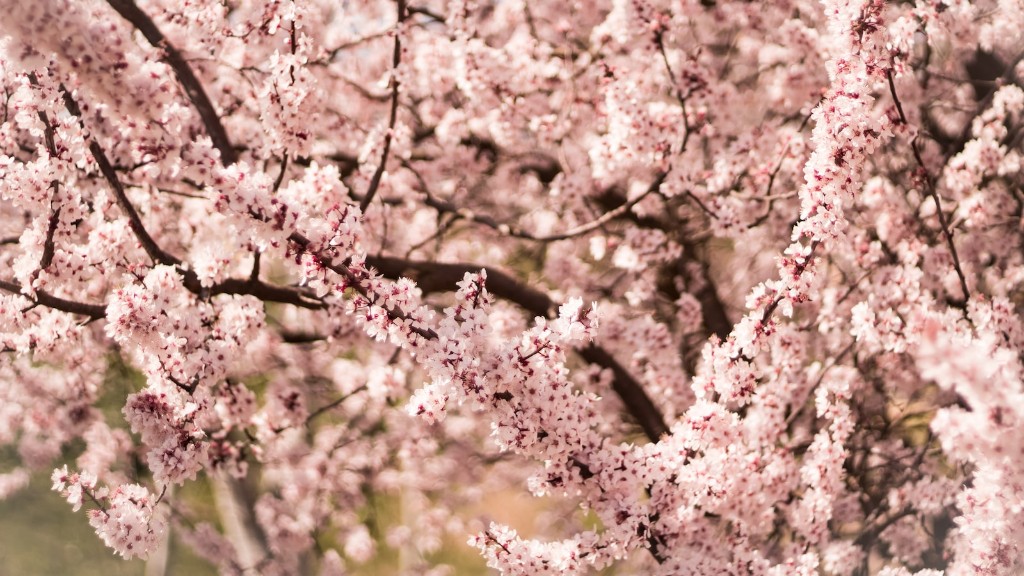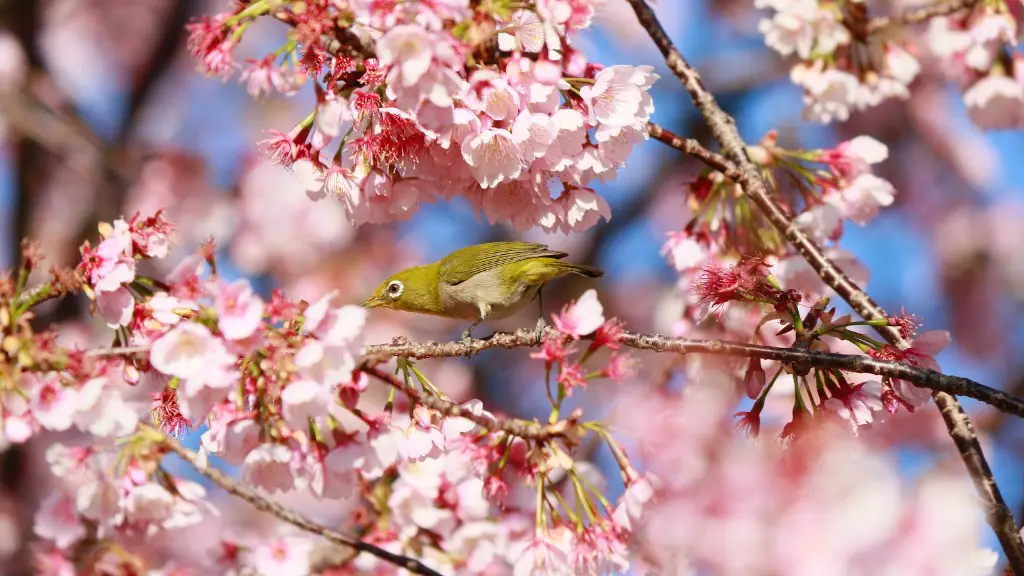Fruit-Growing Habits of Stella Cherry Trees
The Stella cherry tree is a popular choice amongst gardeners because of its intensely sweet, dark red-black fruit. As a lover of this variety of cherry, you might be wondering how fast it grows and what its habits are when it comes to bearing fruit. Read on for a comprehensive overview of the growth rate and fruit-bearing habits of a Stella cherry tree.
Growth Rate
The Stella cherry tree is relatively fast-growing, reaching mature heights of 6 to 8 feet (1.8 to 2.4 m) in six to eight years. Additionally, these compact trees typically reach a width of 8 to 10 feet (2.4 to 3 m). Pruning can be used to control the size and shape of your Stella cherry tree. Pruning is best done in late winter or early spring prior to the cherry blooms.
Professional arborists recommend pollarding or crown reduction to control growth and shape. Pollarding involves cutting the top and main limbs of the tree back to lateral buds or branches. Crown reduction involves cutting back the outermost growth of a tree to reduce the size of the tree overall.
Fruit-Bearing Habits
The Stella cherry tree is an excellent choice for home orchards, as it typically produces heavy crops of sweet, dark red-black cherries over an extended period of time. Unfortunately, these trees require a more specific range of environmental conditions to set full crops of fruit, as too much heat or lack of pollination will reduce crop size and overall yield.
Stella cherry trees are self-pollinating and require between 400 – 750 chill hours to set fruit. Chill hours are the number of hours in a year that a tree is exposed to temperatures of 45°F (7.2°C) or lower. If you live in an area with mild winters, Stella cherry trees may not produce a full crop.
Pests and Diseases
One major disadvantage of growing a Stella cherry tree is its vulnerability to a variety of pests and diseases. Common diseases include bacterial canker, powdery mildew, and brown rot. Insects such as peach twig borer, cherry leafhopper, and cherry fruit fly can also reduce cherry production and quality.
It’s important to use an integrated pest management approach when it comes to pest and disease management. This means monitoring your trees for any signs of pest or disease activity and removing and disposing of any affected parts of the tree as quickly as possible. Applying fungicide sprays before bud break may also help to reduce the risk of disease.
Harvesting
< Stella cherry trees will typically begin producing fruit in the summer of their third year and will reach full maturity in six to eight years. These cherries can be harvested at the peak of their ripeness, and they'll keep in the fridge for up to one week. However, they can also be preserved by freezing or turning into preserves or jams.
Botanical Overview and Cultivation
The Stella cherry tree is a deciduous tree that is typically propagated from budwood grafted onto a standard rootstock. These trees require a slightly acidic to neutral soil pH. They also require full sun and moist, well-draining soils.
It’s also important to note that Stella cherry trees benefit from regular fertilization, as fertilizers help to build strong roots, stimulate lush foliage, and promote abundant fruit crop.
“Pruning for Structure and Pace
Given the rapid growth rate of the Stella cherry tree, pruning is highly recommended both for aesthetics and fruit production. Proper pruning techniques can help you shape the tree and speed or slow its growth rate. Pruning also helps to balance the size of the tree, improve airflow, and galvanize a higher number of smaller fruit.
Professional arborists may use either pollarding or crown reduction, which involve different techniques of cutting branches or the entire tree back. Pollarding or crown reduction can be done in late winter or early spring, prior to the blooms.
Climate Requirements and Environmental Factors
Stella cherry trees are moderately-hardy in winter and will do best in climates that are temperate to cool in temperature with enough chill hours. In order to yield a full crop of cherries, these trees require temperatures of 45°F (7.2°C) or lower for 400 to 750 hours per year. If temperatures are too high or chill hours are not met, Stella cherry trees may not produce an abundant crop.
Furthermore, Stella cherry trees are vulnerable to a wide range of diseases and pests. Proper monitoring and integrated pest management are important to protect your tree from pests and diseases.
Fruit Production and Harvesting
When it comes to fruit production, Stella cherry trees typically begin to bear fruit in the summer of their third year. Professional gardeners recommend harvesting cherries at the peak of their ripeness. Thereafter, you can use a variety of preservation techniques to preserve the cherry crop, such as freezing, turning into preserves, or making jams.
Conclusion and Overall Outlook
Overall, the Stella cherry tree is a popular choice for gardeners due to its intensely sweet dark red-black fruit. This variety of cherry tree is relatively fast-growing and will typically reach mature heights of 6 to 8 feet (1.8 to 2.4 m) in six to eight years. It requires a specific range of environmental conditions to set full crops of fruit, and it’s vulnerable to a variety of pests and diseases. All in all, if you are a lover of cherries and have the right climate and pest/disease management practices in place, the Stella cherry tree can be a rewarding addition to your home orchard.


